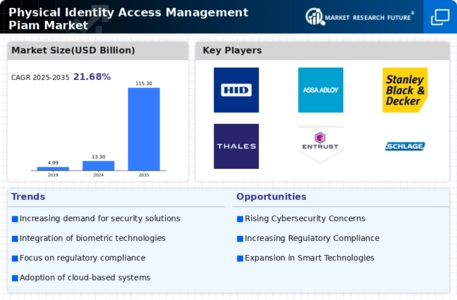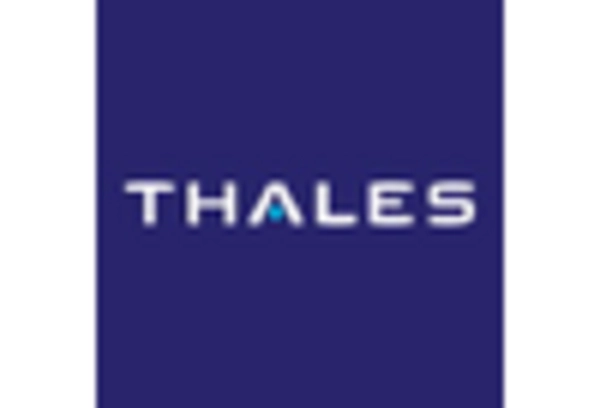Regulatory Compliance
The landscape of regulatory compliance is becoming increasingly complex, compelling organizations to adopt stringent access management protocols. Regulations such as the General Data Protection Regulation (GDPR) and the Health Insurance Portability and Accountability Act (HIPAA) impose strict requirements on data protection and access control. The Physical Identity Access Management Piam Market is witnessing a surge in demand as organizations strive to meet these compliance standards. Failure to comply can result in substantial fines and reputational damage, prompting organizations to invest in comprehensive access management solutions. This trend underscores the critical role of Physical Identity Access Management in ensuring compliance and protecting sensitive information.
Rising Security Concerns
The increasing prevalence of security breaches and unauthorized access incidents has heightened the demand for robust security solutions. Organizations are increasingly recognizing the necessity of implementing advanced security measures to protect sensitive information. This trend is particularly evident in sectors such as finance and healthcare, where data integrity is paramount. The Physical Identity Access Management Piam Market is responding to these concerns by offering solutions that enhance security protocols and mitigate risks. As organizations strive to comply with stringent regulations, the adoption of Physical Identity Access Management solutions is likely to accelerate, reflecting a broader commitment to safeguarding assets and maintaining trust with stakeholders.
Shift Towards Remote Work
The shift towards remote work has transformed the way organizations approach access management. As employees increasingly work from various locations, the need for secure and flexible access solutions has become paramount. The Physical Identity Access Management Piam Market is adapting to this trend by offering solutions that facilitate secure remote access while maintaining stringent security protocols. Organizations are seeking to balance productivity with security, leading to the adoption of multi-factor authentication and other advanced access controls. This shift is likely to continue, as remote work becomes a permanent fixture in many industries, further driving the demand for effective Physical Identity Access Management solutions.
Technological Advancements
Rapid advancements in technology are driving innovation within the Physical Identity Access Management Piam Market. The integration of artificial intelligence and machine learning into access management systems is enhancing the ability to analyze user behavior and detect anomalies. These technologies enable organizations to implement more sophisticated access controls, thereby reducing the likelihood of unauthorized access. Furthermore, the emergence of Internet of Things (IoT) devices necessitates a reevaluation of access management strategies, as these devices often require unique security measures. As organizations seek to leverage these technological advancements, the demand for Physical Identity Access Management solutions is expected to grow, fostering a more secure operational environment.
Growing Awareness of Identity Theft
The rising awareness of identity theft and its implications is influencing organizations to prioritize access management strategies. As incidents of identity theft continue to rise, businesses are recognizing the importance of protecting their assets and customer information. The Physical Identity Access Management Piam Market is responding to this growing concern by providing solutions that enhance identity verification processes and reduce the risk of unauthorized access. Organizations are increasingly investing in technologies that offer real-time monitoring and alerts, enabling them to respond swiftly to potential threats. This heightened awareness is likely to drive further investment in Physical Identity Access Management solutions, as organizations seek to fortify their defenses against identity-related risks.


















Leave a Comment